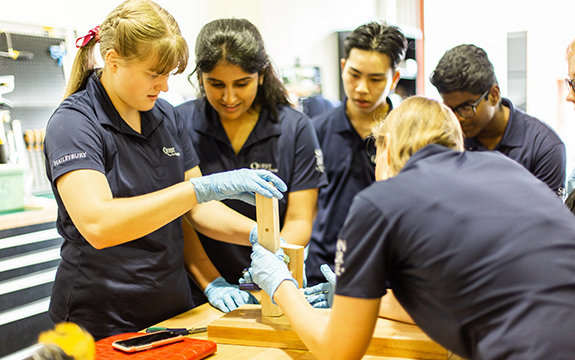
Team Microcavity performing part of the final assembly, constructing a vice to allow the various glued parts to dry in the correct orientation.
In summary
- The 2019 Swinburne Haileybury International Space Station Experiment has launched into space
- The experiment will test the effects of microgravity on tooth decay
- Swinburne staff mentor the Haileybury students, who design, build and program their own experiment
The second Swinburne Haileybury International Space Station Experiment (SHINE) launched from Wallops Island, Virginia in the US aboard an Antares rocket at 6.46am (AEST), to make its way to the International Space Station (ISS).
To celebrate this amazing achievement the SHINE team watched NASA's live broadcast of the blast off in the Virtual Reality Theatre at Swinburne's Hawthorn campus.
SHINE began in 2017, focusing on creating a hands-on experience where secondary students from Haileybury
/University Public Release. This material from the originating organization/author(s) might be of the point-in-time nature, and edited for clarity, style and length. Mirage.News does not take institutional positions or sides, and all views, positions, and conclusions expressed herein are solely those of the author(s).View in full here.






